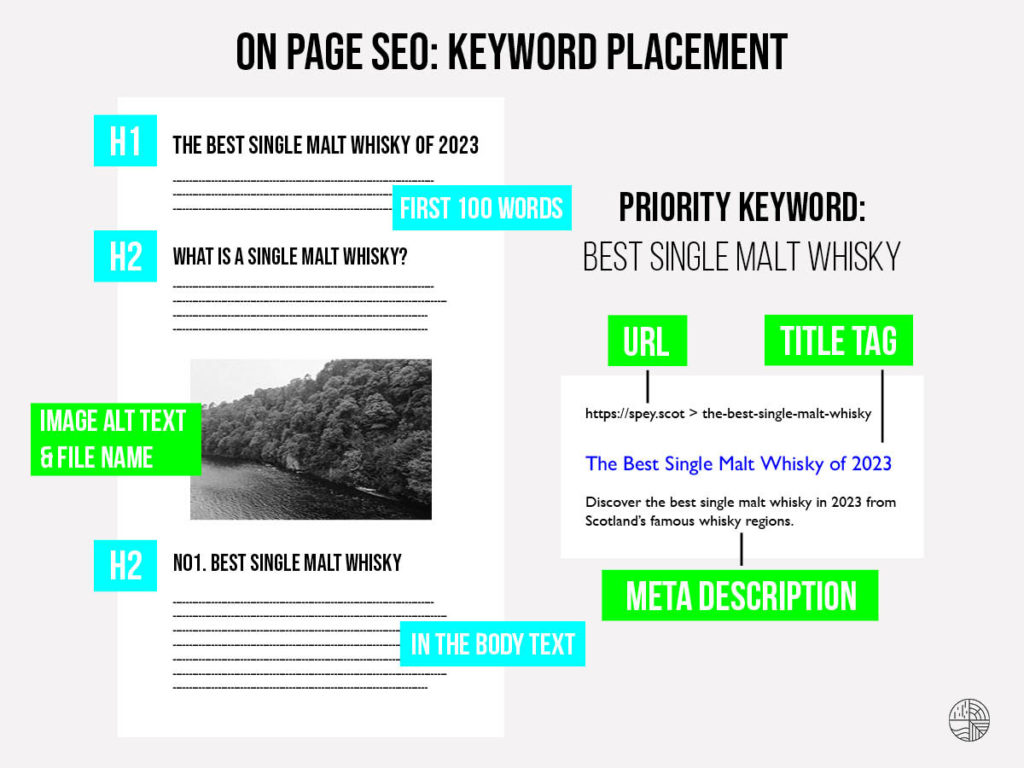When we write copy for digital, we need to keep SEO in mind. This ensures content appears earlier in search results, increases visibility and drives traffic. Ultimately leading to: (1) Greater brand awareness, (2) Engagement opportunities and (3) Customer acquisition potential. Take a moment to digest our simple guide on how to write for SEO.
What is SEO?
SEO or Search Engine Optimization is a process used to make websites more discoverable and as a consequence improve ranking on search engine results pages.
Well-performing SEO will drive organic traffic to your website making it an important digital marketing tool.
Why you should write for SEO.
By crafting content with SEO in mind, you’re optimising how algorithms perceive the website it’s published on.
Your content then appears earlier in search results, increasing visibility and driving more traffic. This ultimately leads to:
1. Greater brand awareness
2. Engagement opportunities
3. Customer acquisition potential
Additionally, regularly publishing valuable content optimised for SEO can position you as a thought leader or expert in your industry, further enhancing your trustworthiness and credibility as a writer and creator.
What affects search engine ranking?
One key aspect of effective SEO involves understanding how search engines rank websites.
They consider many factors when determining which sites appear at the top of results pages, including:
1. Keyword relevance
2. Page loading speed
3. Mobile responsiveness
4. Backlinks
For copywriters and creators, it is important to understand the process of SEO to ensure that produced work is benefiting the websites it appears on. So, how do we write for SEO?
How to write for organic SEO
Choose your keywords
Keyword research enables you to identify search terms commonly used by people interested in your niche or industry. By leveraging these insights, you can produce content tailored to answer their questions and concerns.
Carefully placing keywords in the title tag, header tags, meta description, and body copy allows search engines to recognize the relevance of your pages to certain search queries. This way, you increase the chances of appearing on search engine result pages for relevant keywords.
Here are 4 steps to follow for keyword research:
1. Identify the business goal
Define what you want to achieve through your SEO. This could include driving more traffic to your website, increasing conversions, or expanding brand awareness. Understanding the objectives helps narrow down which keywords matter most.
2. Brainstorm potential keywords
Keeping the business goals in mind, come up with a list of potential keywords related to your products/services. You can refine these later based on data analysis.
3. Analyse search volume
Use tools like Google Keyword Planner or ahref’s Free Keyword Generator to see how many monthly global or local searches occur for each phrase. Selecting keywords with moderate-to-high search volumes ensures there’s enough interest to justify optimising content around them. On the flip side, low-search-volume keywords likely won’t generate significant traffic unless they strongly relate to your business.
4. Check what’s trending
Use tools like Google Trends to check the popularity of top search queries in Google Search across various regions and languages over time. Doing this can help with both seasonal planning and understanding the consumer.
Crafting SEO-friendly copy
If you are a writer you will no doubt know how to write, but do you know how to write for SEO?
By combining keyword research and the guidelines below, your content will be more appealing to businesses and search engines.
1. Craft a catchy title including one keyword or phrase at the beginning. Aim for 50-60 characters. This can improve both click-through rate and SEO
2. The priority keyword or phrase should appear in the first paragraph
3. Include keywords in subheadings
4. Ensure subsequent paragraphs contain some keywords, but don’t overdo it – 2% keyword density is ideal
5. The article length should be +500 words – longer pieces tend to perform better in search results because they offer more value to readers
6. Linking back to relevant pages or blog posts will improve SEO by telling search engines what’s on your website, so include these links in your copy
Finishing the backend
To improve SEO there are several things you can do on the backend of your website before publishing content.
If using a website builder like Squarespace or WordPress it’s quite simple to make these finishing touches.
1. Include a keyword in the page URL
2. Ensure any images or videos to be uploaded include a keyword in the file name
3. Add alt-tags to images containing a keyword.
The diagram below is a great prompt when creating and uploading content.

Is that it for SEO?
We wish we could say that’s it for SEO, but it’s much more complex than that. Optimising your copy for search is the tip of the iceberg.
When it comes to SEO we would be optimising both on-page (the technical aspect of the website as well as its content) and off-page (factors influencing popularity, relevance, trustworthiness & authority) for website success.
If you are interested in our SEO services, contact hello@spey.scot for more information.
